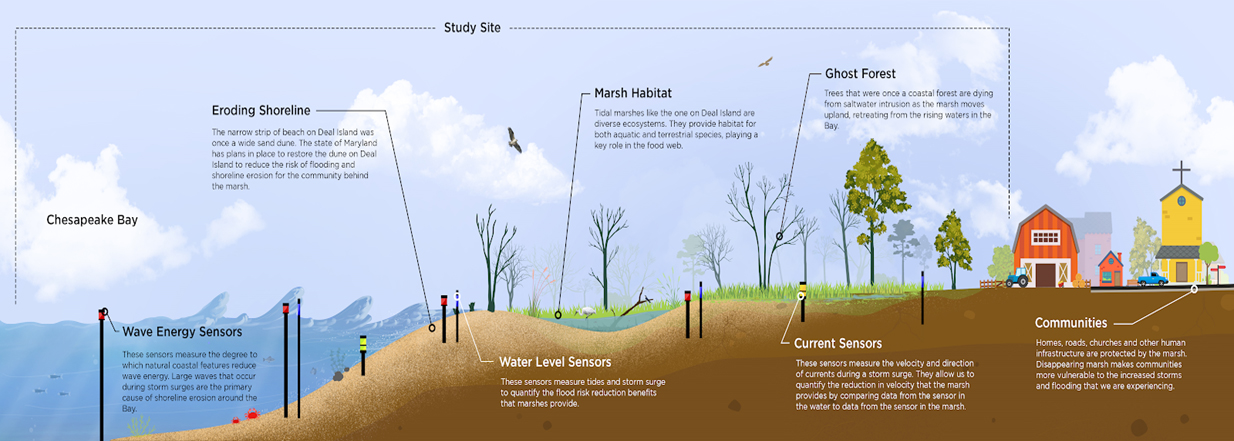We will analyze how marshes, submerged aquatic vegetation, and other natural features reduce wave energy and flood risks along Maryland’s Chesapeake Bay and Atlantic coastal bays. Our findings will inform management actions by the Maryland Department of Natural Resources to maintain or enhance the ecosystem services of marshes and other natural features and inform efforts by The Nature Conservancy to promote the consideration of natural features in county and municipal adaptation plans.
Why We Care
The Chesapeake Bay region has one of the highest rates of water level rise in the U.S., due to sea level rise and sinking land. Maryland is expected to see up to an additional two feet of sea level rise in the next 30 years. However, Maryland has an abundance of habitats that can help mitigate the effects of sea level rise, including marshes and submerged aquatic vegetation.

What We Are Doing
We will quantify wave attenuation and flood reduction benefits of marshes, submerged aquatic vegetation, and other natural features along the shores of Maryland’s Chesapeake and Atlantic coastal bays. We will take the following steps to accomplish this goal:
- Measure hydrodynamic conditions, such as water level, current velocities, wave heights, and vegetation characteristics at selected natural feature sites (Figure 1);
- Calculate the economic value of coastal protection benefits from these natural features by determining the risk-reduction to coastal infrastructure and the cost savings from not using conventional shoreline protection structures;
- Model wave attenuation across the state by including field data in models (ADCIRC + SWAN, XBeach); and,
- Estimate the statewide flood protection capacity of natural features under current and future water levels. The results will be incorporated into Maryland’s Ecosystem Services Framework, and the state’s restoration and conservation tools will be updated to consider natural coastal protection benefits. Specific conservation and ecosystem management actions to enhance coastal resiliency will be shared with coastal managers.
The project is led by George Mason University, and is funded through the NCCOS Ecological Effects of Sea Level Rise Program. Project partners include Maryland Department of Natural Resources and The Nature Conservancy.
